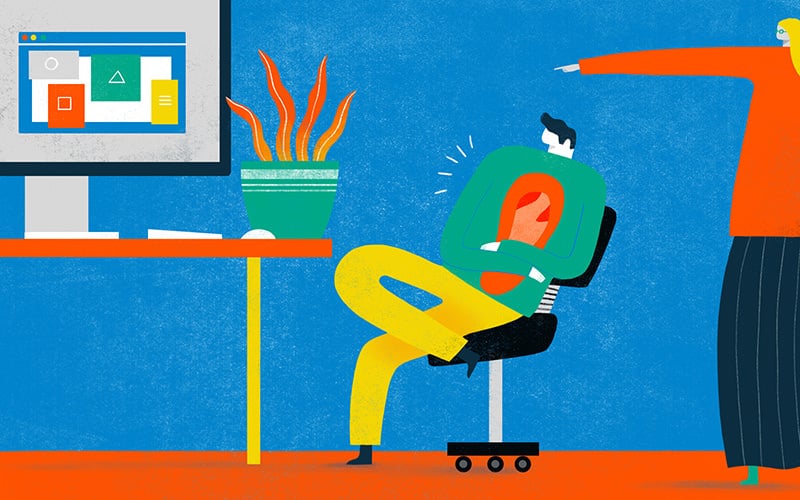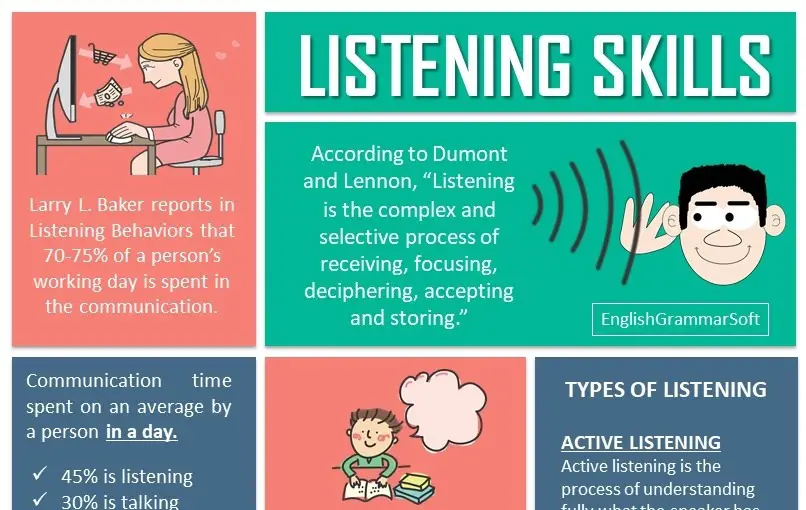Connect with a partner through empathy and understanding.
Are you struggling to keep up with native speakers? You’re not alone! This is a common challenge for many language learners – even those who’ve been studying for years. Fortunately, exposing yourself to native speakers through active listening exercises can greatly improve your abilities. If you’d like to better understand fast-paced conversation in your language, follow these tips and ideas to strengthen your active listening skills.
What is Active Listening?
Active listening and passive listening are two distinct ways to learn a new language. While passive listening may help you pick up words and phrases subconsciously, active listening is a much more effective approach. This is because active listening requires concentration, whereas passive listening happens in the background.
According to Irish Polygot and language expert Benny Lewis, language itself requires attention. When conversing with a friend in your native language, for example, you dedicate your full attention to the words being spoken. As soon as you start multitasking, your concentration shifts to a new task and its harder to recall what’s happened. Similarly, you won’t be able to keep up with native speaking unless you practice listening with your complete and undivided attention.
Active listening - listening for details. There are many types of exercises which can help for the formation of the ability and willingness to dialogue. English listening skills practice LearnEnglish Teens - British Council. A) Reception process should be active, that is why drills in listening have to be combined with definite. Assignments for exercises in listening based.

Active Listening Exercises: Getting Started
New language learners need to spend time immersed in the language – not just learning about it – according to Japanese language expert John Fotheringham. That’s why its so important to listen to native speakers when engaging in active listening. Beginner level language courses sometimes focus on slowing down sentences and articulating words, which can leave you struggling to keep up with the fluid pace of native conversation. Fortunately, Fotheringham says that listening to authentic content is the best and possibly fastest way to learn a language.
Podcasts have always been a great way to improve your listening skills, especially when they’re created by native speakers. Language expert Lindsay Does Languages suggests how she adds both French music and podcasts in French to her daily routine when working to improve her listening skills. Whether its sitting at your desk or driving in your car, music, podcasts and radio programs are great ways to immerse yourself in native speaking and practice your active listening skills.

Build a Language Listening Routine
After you’ve thought about which mediums you’d like to listen to, it’s time to build an active listening routine. Blogger, teacher and podcaster Kerstin Cable outlines a number of helpful language learning tips in her Language Habit Toolkit. Cable says that no matter what language learning goal you set, it’s key to build a routine. A consistent, focused routine helps build a habit – and a habit is the secret to success. “Building a language habit is the best way of allowing yourself to improve gradually while leaving space to bring joy and sustainability into language learning” she adds.
To build a routine, Cable says its best to focus on simple, achievable progress and realistic goals. Active listening exercises are a great addition to your language learning routine because they’re an approachable way to immerse yourself in native speaking. Practicing your active listening skills in small doses over days, weeks and months is perhaps the most realistic way to immerse yourself.
Active Listening Activities
Ready to become a master at active listening? The following active listening exercises will help you sharpen your language comprehension skills and keep up with native speakers like never before.
Summarize the Language
Whether you’re watching French TV or listening to Spanish radio, summarizing what you’ve learned is a great way to reinforce your language skills.Agnieszka Murdoch of 5-Minute Language explains that summarizing can help both listening and speaking skills. To prepare for a summarizing activity, simply put on a short program (30 minutes or less) and listen to it two times through. For the first round, listen actively and try to internalize as much as you can. Feel free to stop it and replay certain parts if you had trouble hearing what was said. On the second round, do your best to take notes on key themes and ideas.
After these two rounds of listening, summarize what you’ve learned in either a written or spoken summation. Summarizing requires that you listen actively, so it’s a great way to reinforce this skill while also expanding your vocabulary.
Alternate Short and Long Materials

Listening to a variety of programs can help keep you engaged as you improve your language skills. Language Expert Steve Kaufmann suggests interspersing shorter content, like podcasts, with longer content like audiobooks.
Longer materials also provide a sense of comfort and stability, since you’re listening to them over multiple weeks or months. This can aid in the creation of a routine and give you something to look forward to. If you do choose this route, try getting your hands on a text version of the audiobook. Mark words or phrases that you don’t understand, and set aside time to review these questions after you listen. This will help reinforce your understanding of transitions and filler words, in addition to expanding your knowledge of advanced sentence structure.
As for adding these longer texts to your routine, it’s best to keep sessions short and sweet. For example, you might decide to listen to your audiobook for thirty minutes each week, in addition to the shorter programs you’re studying. Keeping sessions shorter will help you save energy and focus for reviewing terms after the session.
Cloze-Listening
Another way to improve your active listening skills is through Clozemaster’s cloze-listening feature. With Clozemaster, learners are asked to fill in the missing word in a given sentence. The cloze-listening feature helps you improve your active listening skills by allowing you to hear the sentence before you see it, and then asks you to fill in the missing word.
Students choose their target language, and then choose how they’d like to play based on their level. For example, you can choose to play sentences grouped by the “100 Most Common” or “500 Most Common” words according to a frequency list for that language, or choose the Fast Track to play sentences in order of difficulty.
Clozemaster is a great option because it offers a personalized learning experience for learners of all levels. The cloze-listening feature is available for 16 languages at the time of writing. Exercises are spoken at average speeds, but can be slowed down if needed. In addition to training your active listening skills, learners also see the written version of the sentence. You can also choose from different speakers for most languages, including male and female voices, which supports dynamic exposure to the spoken language.

Clozemaster Pro subscribers get unlimited cloze-listening access, and with thousands of sentences, that means hours of highly focused listening practice.
Visual Reinforcement
Active listening exercises can also be reinforced with visual cues. Linguist Ute Limacher Riebold explains that visual cues and feedback are crucial aspects of learning a language fluently. Visual reinforcement helps us make connections between new words and known words. It also provides context and supports long term memorization.
One way to add visual cues to your active listening exercises is to draw pictures. You might include images and words on the same page, or you might keep it simple by drawing basic shapes. You could label each picture with the title of the podcast or the chapter in the book – something to help you connect it to the lesson. A different idea is to make graphs or charts of the new vocabulary you’ve learned. If you like photography, why not research relevant photographs to print out and place in your notebook?
The important aspect of this exercise is that you have a tangible, visual object to look at. When you go back and listen to the chapter a second time, the images will serve as a guide for reinforcing what you learned.
Top-Down and Bottom-up Listening
By now, you’ve probably heard that watching foreign TV, or going to see plays in another language, is a great way to reinforce your learning skills. These activities add a visual and experiential component to the listening process, which make it easier to stay engaged. If you were to review details and grammar after the show, that’s what we’d call a bottom-ups learning approach. Alternatively, reviewing big-picture concepts before exposure to the language is called top-down learning, according to EFL consultant Lousie Baker. Both bottom-up and top-down listening activities matter for language learning, but top-down listening can be especially helpful when trying to keep up with fast speakers.
Top-Down Active Listening Activities
Essentially, top-down listening focuses on language concepts, rather than words. So if you’re heading out to a play in German, for example, you might read a summary of the play and its characters beforehand. If you’re starting a new audiobook in Polish, you might decide to research the history of the book and its author before you dive in.
Active Listening Exercises Pdf
Top-Down listening helps provide context to the story. This strengthens your active listening skills because you can make sense of themes and ideas more quickly, which may make the story more interesting. It also bridges the gap between words and big-picture ideas, adding a level of sophistication to your language learning.
Active Listening Exercises For Children
What are your favorite active listening exercises? We’d love to hear your thoughts!